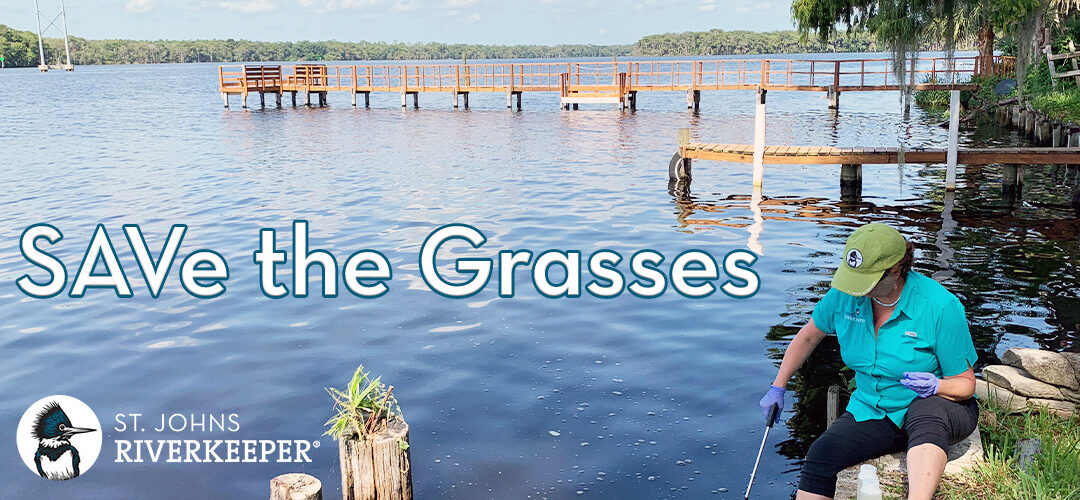St. Johns Riverkeeper is Monitoring 80-miles of the most threatened habitat of the St. Johns River
Historically, the tidal balance of salt and freshwater of the St. Johns River has enabled healthy underwater grasses to thrive, providing critical habitat for fresh and saltwater species. This thriving estuary is now at risk. The river’s underwater grasses are disappearing, the wetlands are stressed, and fish habitat is vanishing from the St. Johns River’s ecosystems.
Submerged aquatic vegetation (SAVs) are an important biological indicator of river health and are vital to the continuation of a healthy river ecosystem. SAVs are sources of refuge, oxygen, habitat, and food for many aquatic species including the West Indian Manatee (Trichechus manatus).
Yet, scientists have concluded that the vast majority of SAVs have disappeared in the Lower St. Johns River, with estimates as high as 99%. SAVs do periodically decline as a result of droughts or hurricanes, but the grasses typically begin to bounce back within a few years. However, this time is different. The grasses in the St. Johns have not returned since Hurricane Irma, but why? What is preventing the regrowth of the SAV? Government environmental agencies have offered several possible reasons, but consensus has not been reached and more needs to be done.
As a result of the current fragile state of the river, St. Johns RIVERKEEPER is launching a multi-day expedition to investigate the case of the lost grasses.
Our team will spend several days on the water monitoring the most threatened habitat of the St. Johns River. We will patrol an 80-mile stretch of the river between Doctors Lake and Lake George in search of remaining SAV beds, answers to our questions, and possible solutions to restore this vital habitat.
To better understand current conditions and identify possible reasons for the decline, water quality parameters will be assessed – including the sampling of common stressors of SAVs, such as algal blooms, pH level, turbidity, and salinity concentration. Aboard St. Johns RIVERKEEPER’s patrol boat, the Kingfisher, St. Johns RIVERKEEPER team members and volunteers will visit numerous sampling sites and meet with homeowners, anglers, scientists, and community leaders to collect observational intel and data.
The expedition launches May 16, 2023.
